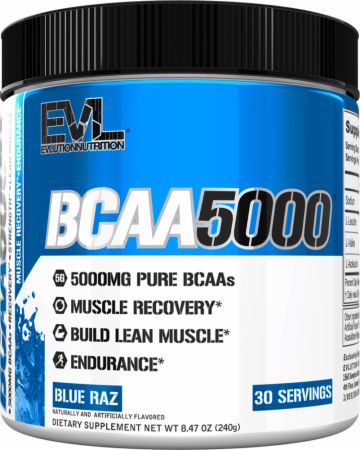More is better—or is it? Those of us striving to build extreme amounts of muscle far beyond what the average gymgoer would ever aspire to live by the motto more is better. A 300-pound bench press is better than benching 200 pounds. It's better to have 18-inch guns as opposed to 14-inch peashooters. And isn't it better to be a muscular 200 pounds instead of 120 soaking wet?
We often carry over that mentality into our training frequency and volume. We assume that hitting the weights more often and beating up our muscles for hours will give us the best possible gains. Even on the surface, that premise is flawed. If more training automatically meant more gains, we would, theoretically, become our absolute biggest by training 16 hours a day, meaning every minute of every waking hour, every single day. Instinctively, we understand that's too much, but how much should we be training? The answer to that question requires an understanding of the process of muscle growth and the role recovery plays in it.
Recovery—A Fairly Recent Concept
In the early years of modern bodybuilding, when men like John Grimek, Steve Reeves, and Clancy Ross reigned, a typical training program was to work the entire body in one session, three times a week, often on a schedule such as Monday, Wednesday, and Friday. They hit every muscle group three times a week with brutal full-body programs that would take two hours to complete and interspersed those workouts with four full days off to recover.
By the early 1960s, bodybuilders had discovered through trial and error that they could do a better job of effectively targeting individual muscle groups if they focused on just one or two at a time, and the split routine was born. During the Pumping Iron era of Arnold Schwarzenegger and Lou Ferrigno in the 1970s, many bodybuilders—if they could find the time, that is—trained on a "double split," working out twice a day. They might do chest in the morning and then back in the late afternoon or early evening. They worked the whole body over three days, usually twice in a row, taking off the seventh day to rest. Each of the two daily workouts took 1-2 hours. A chosen few like Arnold thrived on that rigorous workload, while many others failed to see the gains they'd hoped for.

The first person to challenge this high-frequency/high-volume approach was Arthur Jones, the eccentric inventor of the Nautilus machines. In his revolutionary Nautilus Bulletins, Jones took a scientific approach to the subject of building muscle. Training stimulated muscle growth, he explained, but that growth would only occur if the muscles were given adequate time to recover, along with proper nutrients and sleep. If workouts were too long, they could not possibly be intense enough to stimulate growth.
As Jones often said, "You can train hard or you can train long, but you can't do both."
Jones also preached that muscles require more time to recover than any of the bodybuilding experts at the time understood. He designed training protocols for his Nautilus machines around these theories and reverted to full-body workouts done three times a week or, at most, every other day; however, they contained only 1-2 work sets per exercise and these were taken to failure.
Many were suspicious of Jones' motivations, as the programs seemed like a convenient way to minimize crowding at the Nautilus gyms that were sprouting up across the USA and around the world by the late 1970s. None of the top bodybuilders of that era dared to try the brief high-intensity workouts Jones prescribed, except for his protégé, Mike Mentzer, who created his own training system, Heavy Duty, a modified version of what Jones had been advocating. Mentzer's pro career ended prematurely after just two seasons when he quit in disgust because he felt he'd been judged unfairly at the 1980 Mr. Olympia. Yet his books and articles continued to influence millions around the world who adopted his program that emphasized less training and more recovery for superior results.
Enter Dorian Yates
It's likely that bodybuilders would have continued training 5-6 days a week, working each muscle group twice per week, had it not been for the six-year Mr. Olympia reign of the U.K.'s Dorian Yates.
Dorian Yates had been a student of both Jones and Mentzer, and after months of trial and error, he had modified Mentzer's system to fit his own needs. Yates ultimately arrived at training four days a week, on Mondays, Tuesdays, Thursdays, and Fridays, working each body part only once a week with a handful of exercises. Yates would do a few warm-up sets, gradually working up to one all-out work set to failure and often beyond. He dubbed his training style Blood and Guts, and it was immortalized in a gritty, black-and-white training video that motivated legions of would-be Dorians around the world.

Dorian set an entirely new standard of shocking mass with grainy condition, and most believed it was his dogged work ethic in his dungeon-like Temple Gym in Birmingham that set him apart from his rivals at the time. This was the training split he followed:
- Monday: Delts, traps, triceps, abs
- Tuesday: Back, rear delts, lower back
- Thursday: Chest, biceps, abs
- Friday: Quadriceps, hamstrings, calves
Dorian's workouts lasted an hour or less, and he took three full days off from the gym every week. Any arguments that he didn't train enough were refuted by his brutally thick and rugged physique. None of the men who trained longer and more often were able to beat him, and this gave great credibility to the practice of training harder but with more attention paid to recovery.

Muscle Recovery vs. CNS Recovery
Lifters often justify training as frequently as six days per week by pointing out that they are working different muscle groups each day. For example, if you're training chest on Monday and back on Tuesday, your pecs will be recovering until you either train them directly again or involve them indirectly as in dips or close-grip bench presses for triceps. On the surface this makes sense, until you understand the role of the central nervous system, which is being heavily stressed every time you train, regardless of the body part you are working.
The CNS consists of the brain and spinal cord. It's the place to which sensory impulses are transmitted and from which motor impulses pass out. In short, it's how your mind tells your body what to do. Suffice it to say that very intense bodybuilding-type training works the CNS hard and it needs time to recover. Without enough rest days from the weights, the CNS will become so taxed that you will become overtrained.
Overtraining Is Real
According to another popular motto in the bodybuilding world, there is no such thing as overtraining, only undereating and "under" sleeping. There is a kernel of truth in that statement because you certainly won't recover fully from tough workouts unless you feed your body the proper nutrients and get enough rest, with a solid eight hours of sleep per night being the gold standard. Even so, overtraining is still a very real possibility.

How will you know when you're overtraining? Common symptoms include general fatigue, insomnia or interrupted sleep, a decrease in exercise performance, loss of appetite, and an increase in chronic or nagging injuries. You may lose your enthusiasm for training and cease to look forward to your workouts. Eventually, if you continue to overtax your body, you will lose muscle size and strength. For anyone who has worked long and hard to build both, this is clearly a nightmare scenario.
How Much Should You Train?
That's the million-dollar question. There is no blanket prescription that will be optimal for everybody, but here are some guidelines to start.
1. Base Your Training on Your Metabolism and Lifestyle
Generally speaking, the younger you are and the less you have to do outside the gym, the more training you can do and still recover thoroughly. I've also noted that those who played sports that featured very demanding practice such as football, wrestling, or martial arts usually thrive more on training with greater frequency and volume than those who did not. A 21-year-old student who is able to eat 5-6 times a day and get plenty of rest will have more time and energy to recover than a 40-year-old man working construction for 50 hours a week and going home to help his wife care for a couple of children before he can manage six hours of sleep until waking up to get back to work. You will also have to experiment with different amounts of training, as Dorian Yates did, to find out what's best for you. Maybe you will make excellent gains training five or even six days a week, or you may find that kicks you into overtraining rapidly, and you ultimately learn you do best when hitting the gym four days a week or perhaps even three.
2. No Workout Should Take More Than 90 Minutes, Ever
Very few people require or can recover from weight-training workouts that exceed the 90-minute mark. The only two muscle groups that should take you that long, due to their size and complexity, are your back and legs. Any other body part should be done in an hour or less—and shoulders or arms shouldn't take more than 40-45 minutes. If you routinely go well over those limits, you're doing one of two things: wasting a lot of time between sets and exercises or doing far too many exercises and sets. If you're not a powerlifter doing single-rep maximums on the bench press, squat, or deadlift, you don't need 5 minutes between sets. You should be moving quickly and with purpose, getting a great pump and keeping it. Stay off your phone and don't waste time yapping with people. Save that for before or after your workout. Get warmed up, then soldier through the workout at a good pace.

3. Know When to Stop
Many people train too long because either they just don't know any better and assume more training will deliver superior results, or they have no way to gauge when enough is enough. You can't always go by fatigue, especially since many of us live on pre-workout formulas and energy drinks that keep us wired for hours. I suggest using the pump in your muscles as a measuring stick. Arms are an easy muscle group for this. You can and should get the best skin-splitting pump possible in your biceps and/or triceps and try to hold it for 15-30 minutes. There will come a point when even though you're still getting your reps in and your strength hasn't crashed, you start losing the pump. That's when it's time to end the workout. Nothing else you do on that day is going to stimulate any additional muscle growth, but it will tap your recovery reserves. You want to find that sweet spot where you've done just enough damage to your muscles to force them to adapt and grow, but no more. In the words of eight-time Mr. Olympia, Lee Haney, "Stimulate, don't annihilate!"
4. Never Be Afraid to Take an Extra Rest Day
We are a different breed from the average person who has a gym or health club membership. Most of them dread exercise and will find any excuse to skip a workout. If you're reading this, I bet you're the opposite. You get to the gym no matter how busy you are, no matter the weather, or even if you have a minor injury or illness. Your dedication and consistency are what separate you from the rest. They can also be your downfall because you hate taking days off from the gym, even when your body is telling you it needs them.
Pay attention to your energy levels and even your enthusiasm for training. They are often reliable indicators of whether you're training as much as you should be or overdoing it. Never worry that a day off will set you back. If anything, it will probably help you. The solution to most problems when a person has failed to see any progress in weeks or months is simply to take a few days or even a full week off from the weights. In fact, it's a great idea to leave the weights alone for a week 2-3 times a year. Do some cardio and stretching, but do not lift a single pound. If you've never done this, and especially if you're overtrained and don't know it, you will come back to the gym feeling like a million bucks. You won't be weaker. You will be stronger, your mind-muscle connection will be better, and your pumps will be insane. You may be capable of getting much bigger and stronger than you ever thought possible!

